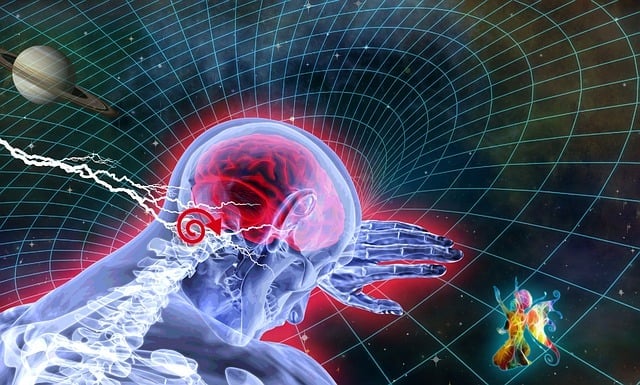Have you ever looked at two circles of exactly the same size and sworn one was larger? If so, your eyes have been tricked by the Ebbinghaus illusion, a classic example of how context can shape what we see. Place a circle among other smaller circles, and it seems bigger; place it among larger ones, and it shrinks before our eyes. This illusion fascinates psychologists because it reveals that perception is not a mirror of the outside world but a clever construction of the brain.
But here is the question that inspired our study: do other animals fall for the same tricks? If a tiny fish or a bird perceives the illusion, what does that tell us about the way they see and interpret their surroundings?
Illusions are more than curiosities. They are powerful tools to understand how brains assemble sensory information. When perception goes 'wrong', it highlights the shortcuts and strategies the brain uses to make sense of complex environments.
In humans, the Ebbinghaus illusion is linked to global processing: the tendency to interpret a scene as a whole before focusing on details. But not all animals live in the same sensory world we do. By testing illusions across species, we can ask whether shared patterns point to deep evolutionary roots, or whether differences reveal adaptations to particular ecological niches. For example, global processing may have evolved in species that need to rapidly integrate complex scenes—such as detecting predators or evaluating group size—while local processing may be favored in species that rely on precise object recognition, like picking out seeds or prey items against a cluttered background.
Fish versus birds: two worlds of vision
To explore this, we turned to two very different species: the guppy (Poecilia reticulata) and the ring dove (Streptopelia risoria).
Guppies inhabit shallow tropical streams full of flickering light, dense vegetation, and unpredictable predators. Their survival depends on rapid decisions: choosing mates, joining shoals, and escaping threats. In such a cluttered world, being able to judge relative size at a glance can be crucial.
Ring doves, by contrast, are terrestrial granivores. They spend much of their time pecking at small seeds scattered on the ground. Precision and attention to fine detail could matter more than analyzing the whole scene. Moreover, their binocular vision allows them to make accurate judgments of distance and size in a very different context.
By placing these species side by side, we asked: does the same illusion deceive both a fish darting through water and a bird searching the ground?
Circles of deception
Our experiments used food as the central 'circle'. For guppies, flakes of food were placed within arrays of smaller or larger surrounding circles. For doves, millet seeds were presented in similar arrangements.
The results were striking: Guppies consistently fell for the illusion. When food was surrounded by smaller circles, the guppies chose it more often, as if it really was larger. Their perception closely mirrored that of humans. Ring doves, however, told a different story. At the group level, they showed no clear susceptibility to the illusion. Some individuals behaved as humans did, others in the opposite way, and many seemed unaffected altogether. This variability suggests that doves may rely on different perceptual strategies; more local, detail-oriented, and less swayed by surrounding context.
Why does it matter?
At first glance, it might seem like just an amusing trick of vision. But these findings speak to deeper questions in evolutionary biology and comparative cognition: perception is not about accuracy for its own sake, it is about what works in a given environment. For guppies, integrating the whole scene may help them navigate visually complex streams, spot larger mates, or quickly gauge relative sizes in a shoal. For doves, tuned to picking out seeds against a messy background, focusing on absolute size and local details may perhaps be more helpful.
The study also reminds us that variation within a species can be as revealing as differences between species. The doves' mixed responses suggest that individual experience or innate bias can strongly shape how an animal interprets illusions. Just like in humans, where some people are strongly fooled by illusions and others hardly at all, animal perception is not uniform.
A window into other minds
By comparing species as different as fish and birds, we get a glimpse of the extraordinary diversity of perceptual worlds. The Ebbinghaus illusion is only one of many tools researchers use to explore these worlds, but it highlights a key point: what we see is not always what is there.
For humans, this is a reminder of the brain's creative shortcuts. For animals, it shows how ecological pressures sculpt perception in ways that fit each species' lifestyle. And for science, it opens a window onto the evolutionary origins of cognition itself. Studying illusions across species helps us understand not only how animals see but also how perception evolves to meet the challenges of life on Earth.






